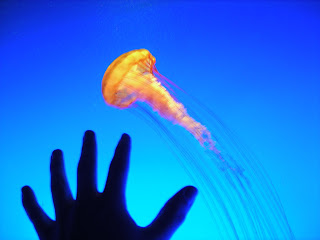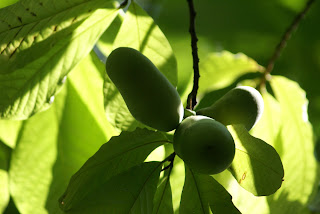
The world is full of animals (and a few plants) busy earning a living pretending to be something else. A cheetah is a cat pretending to be a dog; a grey fox is a dog pretending to be a cat. Slipper shells are snails pretending to be oysters. They are also girls pretending to be boys, but more on that later.
The Atlantic slipper shell (Crepidula fornicata) is one of the most common shells you can find on any eastern beach in North America, with a few Eastern white slipper shells (Crepidula plana) tossed in just make things confusing. They get their name from the shelf or deck on the inside, which makes them resemble shapeless slippers that have been under the bed for years. The deck extends about a third the length of the shell and serves as an anchor and protection for the internal organs. The Atlantic slipper shell is arched with brown markings with the tip bent downward to one side at the back. It is up to an inch and a half long. The Eastern white slipper shell is white and flattened, sometimes a little convex or concave, and generally a bit smaller. Eastern white slippers seem to prefer the inside of old shells and the underside of old horseshoe crabs.
Eggs are brooded within the female’s shell until they develop into exact miniatures of the adult. Periodically, females lift their shells and push the juveniles out into the cold briny deep. Newly hatched young sink to the bottom, where they scrape algae from hard substrate until they settle down in the shallows. Like oyster larvae or spat, slipper shell babies set on anything hard; rocks, shells, horseshoe crabs, each other.
Once a juvenile sets, it attaches with its muscular foot and remains in the same place forever. It has functionally become an oyster - immobile and filter feeding on the microscopic algae and detritus suspended in the water. Oysters have had gazillions of years practicing filter feeding and have evolved an elegantly simple way of moving large volumes of water past their gills, which rake out food particles and pass them to the gut. It has been said that prior to the European invasion, the entire volume of Chesapeake Bay went through an oyster every three days or so. Slipper shells aren’t quite so efficient. Descended from grazing snails that use a tongue-like organ called a radula to rasp algae off rocks, they have come up with a whole new way of getting food. Mucus is secreted from specialized organs located in the mantle and just in front of the gills; the gills sweep in plankton and other particles that stick to the mucus, and the creature uses its radula to lick the whole thing up and pass it to the stomach. Not a dinner guest who would cause you to break out the good china, but it works well enough to get by.
A slipper shell needs a hard surface on which to live; they live in an environment where this critical resource is scarce and scattered. When a slipper finds a hard surface to colonize, be it a rock, piling, shell, or horseshoe crab, other young slippers are attracted to it. Slippers tend to form piles, with the oldest and biggest on the bottom, the youngest and smallest on the top. Piles can be up to ten shells deep.
Slippers are sequential hermaphrodites. The oldest and biggest is the functional female, the smallest and youngest is the functional male. The animal in between are in various stages of transition from male to female. Female is the fallback gender. When a young slipper colonizes a new surface, it becomes female and releases a pheromone to prevent others from following suite. When the female on the bottom of a stack dies, the next one up becomes female and begins to produce pheromone and eggs.
Hermaphrodism occurs throughout the animal kingdom wherever you get a sedentary species with scattered resources. The familiar orange and white clown fish is just such a species. Clown fish colonize sea anemones. Anemones possess tentacles armed with stinging cells and can capture and devour prey up to and including clown fish size. Clown fish secrete a mucus which the sea anemone chemically recognizes as itself, and which protects the clown fish. Anemones are relatively scattered along the bottom in reef environments, and are the critical resource required by the clown fish. Clown fish form groups living around and defending individual anemones. The biggest and oldest clown fish is the functional female, the next biggest, the male. The rest wait their turn. If the female dies or falls to a predator, the male becomes female and the next biggest clown fish becomes the male. Everybody moves up a notch in the hierarchy. Try explaining the movie Finding Nemo in that context. When little Nemo’s mommy and siblings are eaten by the big bad barracuda, Nemo’s daddy should become Nemo’s new mommy, and little Nemo becomes the new daddy…things go weird from there.
For all that they are mucus-eating, bisexual hermaphroditic snails pretending to be oysters, slipper shells are the most common shell on any beach from Florida to Maine. They must be doing something right.




















 The goal for the 24-hours was 1,000 species. At the end, teams had identified 660 of everything, with the tree climbers, tardigrades, and micro-organisms teams still working. When they have finished counting the "little things that make the world turn", the thousand species goal will have been left far behind.
The goal for the 24-hours was 1,000 species. At the end, teams had identified 660 of everything, with the tree climbers, tardigrades, and micro-organisms teams still working. When they have finished counting the "little things that make the world turn", the thousand species goal will have been left far behind.










